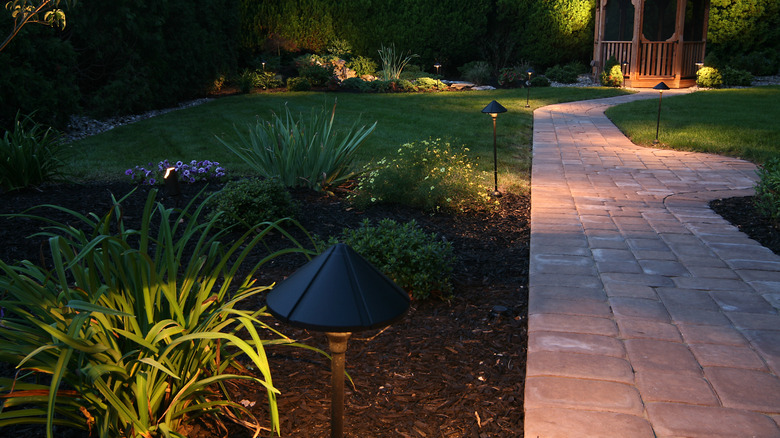Many homeowners want to transform their garden into an oasis. Of course, these areas naturally include lighting fixtures that allow you to enjoy spending time outside even after the sun goes down. However, while humans may enjoy sitting outside at night with a little bit of light, the same can’t always be said for wildlife and plants. Similarly, other types of outdoor illumination such as security lights and outdoor solar lights can also have negative effects on the health and behavior of native wildlife.
While fixtures can accent your overall landscape design, in some cases, they can be more harmful than you realize. Garden lights could cause certain animals to confuse their natural awake and resting periods. It could also attract a large number of insects to your garden or home, which most homeowners do not desire. Artificial illumination in the garden can also disrupt plant growth, leading to mutations, reduced fruit production, and vegetation that grows unevenly.
The effects of artificial light

Outdoor light fixtures can have an impact on the general health of the insects and animals that call your backyard home. Moths may confuse the fixtures with the moon, which they use to navigate. Many winged insects are attracted to the illumination, leading to their death and decreasing populations. This could also cause spiders to feast on the bugs around outdoor lights, and homeowners don’t want these insects invading their home. Further, lights can impact daytime bird’s sleep and owls’ nightly hunts.
Both trees and plants use photosynthesis to transform light into energy and nutrients. As well as the light from the sun, plants can also absorb artificial light. The problem with this is that, just like humans, plants need a resting period. Though they don’t sleep, they tend to be less active at night, since the sun is set. However, bright garden lights could disrupt their natural cycle and cause plants to stay in an active period for longer than they’re supposed to, which could lead to some unusual behavior. Some plants may display phototropism, which is when they grow towards the light source, causing uneven growth on otherwise manicured plants. Another negative effect is mutations, which can change the size and shape of fruit and the color of leaves.
Wildlife and plant-friendly garden lights

Removing artificial light completely from your garden is the ideal solution to help wildlife and plants thrive. Unfortunately, that isn’t always an option for modern yards and gardens. Luckily, there are things you can do to decrease the impact of these outdoor fixtures on insects, birds, and backyard plants. Opt to install your lights as low as possible to decrease light pollution, and wall-mounted fixtures should be installed at 15 feet high or less. Adding a shield can keep the light in a specific area rather than illuminating the entire outdoor space.
When possible, use motion sensors, especially when fixtures are installed in higher areas. Lights that only turn on with movement can still aid in safety and protection without attracting or disturbing insects and birds. Be sure the motion sensor is on a timer so the fixtures doesn’t stay on for long periods of time, which could cause plants to absorb too much light. Also consider swapping some of your lightbulbs to be amber or red-hued rather than bright white. While humans can see red light, many animals cannot, so it has the benefit of illuminating the space without disturbing wildlife or attracting them to your yard. Green lights won’t disrupt plants’ natural cycle or their inactive periods at night. Consider lights with color filters you can turn on at night to illuminate the space while causing the least amount of damage.